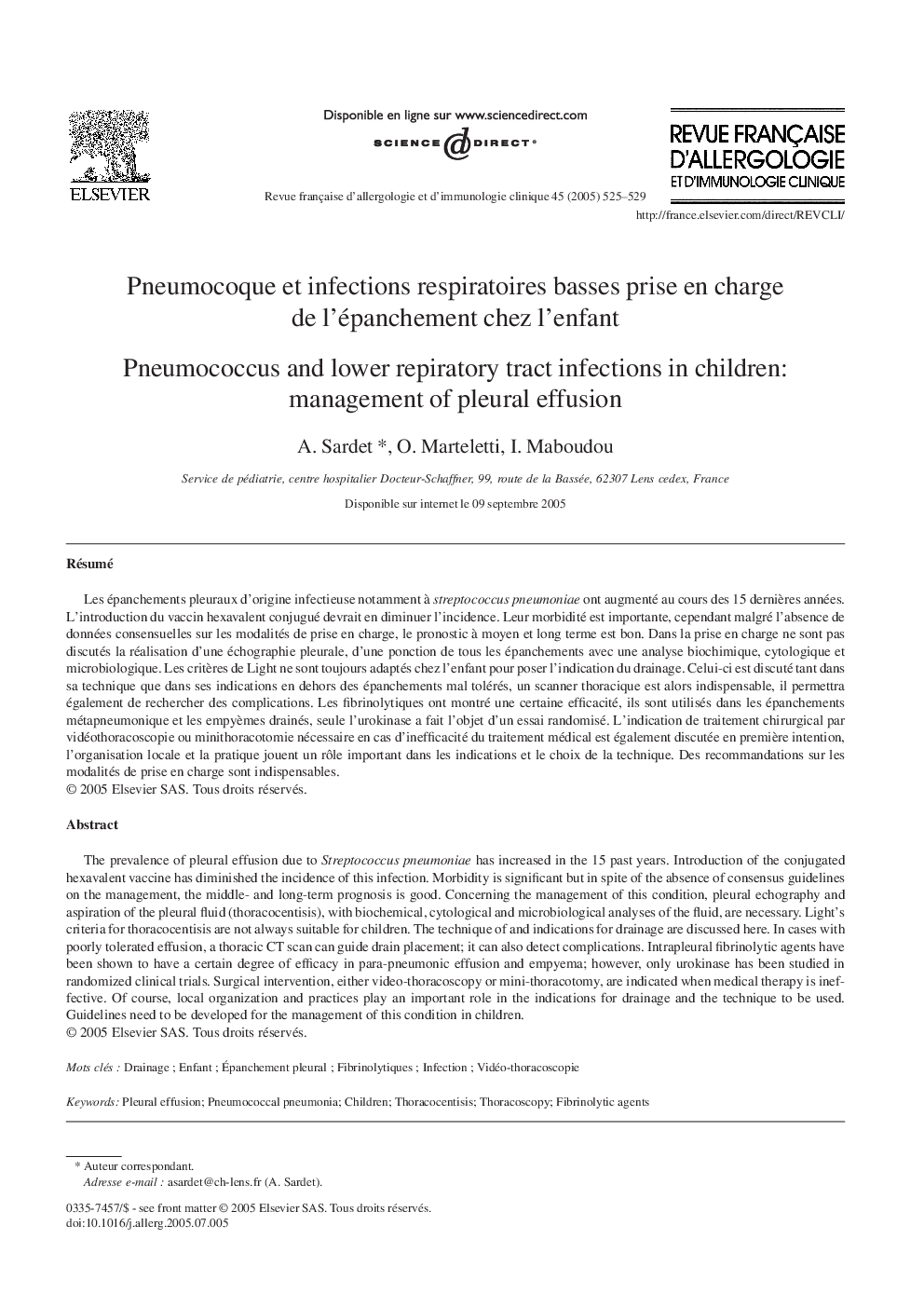| Article ID | Journal | Published Year | Pages | File Type |
|---|---|---|---|---|
| 9100163 | Revue Française d'Allergologie et d'Immunologie Clinique | 2005 | 5 Pages |
Abstract
The prevalence of pleural effusion due to Streptococcus pneumoniae has increased in the 15 past years. Introduction of the conjugated hexavalent vaccine has diminished the incidence of this infection. Morbidity is significant but in spite of the absence of consensus guidelines on the management, the middle- and long-term prognosis is good. Concerning the management of this condition, pleural echography and aspiration of the pleural fluid (thoracocentisis), with biochemical, cytological and microbiological analyses of the fluid, are necessary. Light's criteria for thoracocentisis are not always suitable for children. The technique of and indications for drainage are discussed here. In cases with poorly tolerated effusion, a thoracic CT scan can guide drain placement; it can also detect complications. Intrapleural fibrinolytic agents have been shown to have a certain degree of efficacy in para-pneumonic effusion and empyema; however, only urokinase has been studied in randomized clinical trials. Surgical intervention, either video-thoracoscopy or mini-thoracotomy, are indicated when medical therapy is ineffective. Of course, local organization and practices play an important role in the indications for drainage and the technique to be used. Guidelines need to be developed for the management of this condition in children.
Keywords
Related Topics
Health Sciences
Medicine and Dentistry
Anesthesiology and Pain Medicine
Authors
A. Sardet, O. Marteletti, I. Maboudou,
